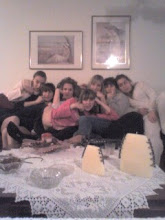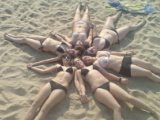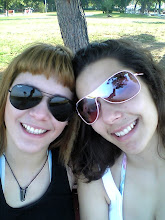Ballet is a formalized form of dance with its origins in the Italian Renaissance court, further developed in France and Russia as a concert dance form. It is a highly technical form of dance with its own vocabulary. It has been influential as a form of dance globally and is taught in ballet schools around the world. Ballet dance works (ballets) are choreographed, and also include mime, acting, and are set to music (usually orchestral but occasionally vocal). It is best known in the form of classical ballet, notable for its techniques, such as pointe work, turn-out of the legs; its graceful, flowing, precise movements; and its ethereal qualities. Later developments include neoclassical ballet and contemporary ballet.
The etymology of the word "ballet" is related to the art form's history. The word ballet comes from French and was borrowed into English around the 17th century. The French word in turn has its origins in Italian balletto, a diminutive of ballo (dance). Ballet ultimately traces back to Latin ballare, meaning to dance.[1]
Main article: History of ballet
Ballet emerged in late 15 century Renaissance court of Italy, as a dance interpretation of fencing, and further developed in the French court from the time of Louis XIV in the 17th century. This is reflected in the French vocabulary of ballet. Subsequently, after 1850, ballet flourished in Denmark and Russia. It was from Russia that it returned to Western Europe and subsequently the globe. The Ballets Russes of Sergei Diaghilev and its successors were particularly influential during this period. It has continued to draw on and be enriched by folk dance and local dance traditions.
In the 20th century ballet has continued to develop and has had a strong influence on broader concert dance, for example, in the United States choreographer George Balanchine developed what is now known as neoclassical ballet, subsequent developments have included contemporary ballet and post- structural ballet, for example seen in the work of William Forsythe in Germany.
Classical ballet
Dancers appear delicate and airy when dancing en pointe, a unique feature of the ballet form of dance.Main article: Classical ballet
Classical ballet is the most formal of the ballet styles, it adheres to traditional ballet technique. There are variations relating to area of origin, such as Russian ballet, French ballet and Italian ballet. The two methods Vaganova method after Agrippina Vaganova and the Cecchetti method after Enrico Cecchetti are Russian and Italian respectively and derive from the original French method.
Neoclassical ballet
New York State Theater, home of the New York City BalletNeoclassical ballet is a ballet style that uses traditional ballet vocabulary, but is less rigid than the classical ballet. For example, dancers often dance at more extreme tempos and perform more technical feats. Spacing in neoclassical ballet is usually more modern or complex than in classical ballet. Although organization in neoclassical ballet is more varied, the focus on structure is a defining characteristic of neoclassical ballet.
It is style of 20th century classical ballet exemplified by the works of George Balanchine. It draws on the advanced technique of 19th century Russian Imperial dance, but strips it of its detailed narrative and heavy theatrical setting. Balanchine used flexed hands (and occasionally feet), turned-in legs, off-centered positions and non-classical costumes (such as leotards and tunics instead of tutus) to distance himself from the classical and romantic ballet traditions. What is left is the dance itself, sophisticated but sleekly modern, retaining the pointe shoe aesthetic, but eschewing the well upholstered drama and mime of the full length story ballet.
Balanchine also brought modern dancers in to dance with his company, the New York City Ballet; one such dancer was Paul Taylor, who in 1959 performed in Balanchine's piece Episodes. Balanchine also worked with modern dance choreographer Martha Graham, expanding his exposure to modern techniques and ideas. Also during this period, choreographers such as John Butler and Glen Tetley began to consciously combine ballet and modern techniques in experimentation.
Tim Scholl, author of From Petipa to Balanchine, considers George Balanchine's Apollo in 1928 to be the first neoclassical ballet. Apollo represented a return to form in response to Serge Diaghilev's abstract ballets.
Contemporary ballet
Main article: Contemporary ballet
Contemporary ballet is a form of dance influenced by both classical ballet and modern dance. It takes its technique and use of pointe work from classical ballet, although it permits a greater range of movement that may not adhere to the strict body lines set forth by schools of ballet technique. Many of its concepts come from the ideas and innovations of 20th century modern dance, including floor work and turn-in of the legs.
George Balanchine is often considered to have been the first pioneer of contemporary ballet through the development of neoclassical ballet.
One dancer who danced briefly for Balanchine was Mikhail Baryshnikov, an exemplar of Kirov Ballet training. Following Baryshnikov's appointment as artistic director of American Ballet Theatre in 1980, he worked with various modern choreographers, most notably Twyla Tharp. Tharp choreographed Push Comes To Shove for ABT and Baryshnikov in 1976; in 1986 she created In The Upper Room for her own company. Both these pieces were considered innovative for their use of distinctly modern movements melded with the use of pointe shoes and classically-trained dancers -- for their use of "contemporary ballet".
Tharp also worked with the Joffrey Ballet company, founded in 1957 by Robert Joffrey. She choreographed Deuce Coupe for them in 1973, using pop music and a blend of modern and ballet techniques. The Joffrey Ballet continued to perform numerous contemporary pieces, many choreographed by co-founder Gerald Arpino.
Today there are many explicitly contemporary ballet companies and choreographers. These include Alonzo King and his company, Alonzo King's Lines Ballet; Nacho Duato and Compañia Nacional de Danza; William Forsythe, who has worked extensively with the Frankfurt Ballet and today runs The Forsythe Company; and Jiří Kylián, currently the artistic director of the Nederlands Dans Theatre. Traditionally "classical" companies, such as the Kirov Ballet and the Paris Opera Ballet, also regularly perform contemporary works.
Εγγραφή σε:
Σχόλια ανάρτησης (Atom)




_(1).jpg)












Δεν υπάρχουν σχόλια:
Δημοσίευση σχολίου